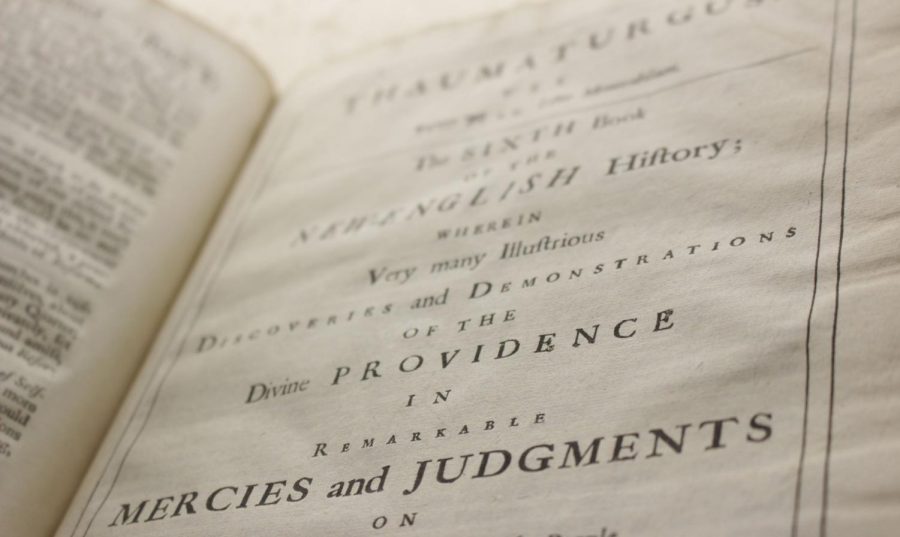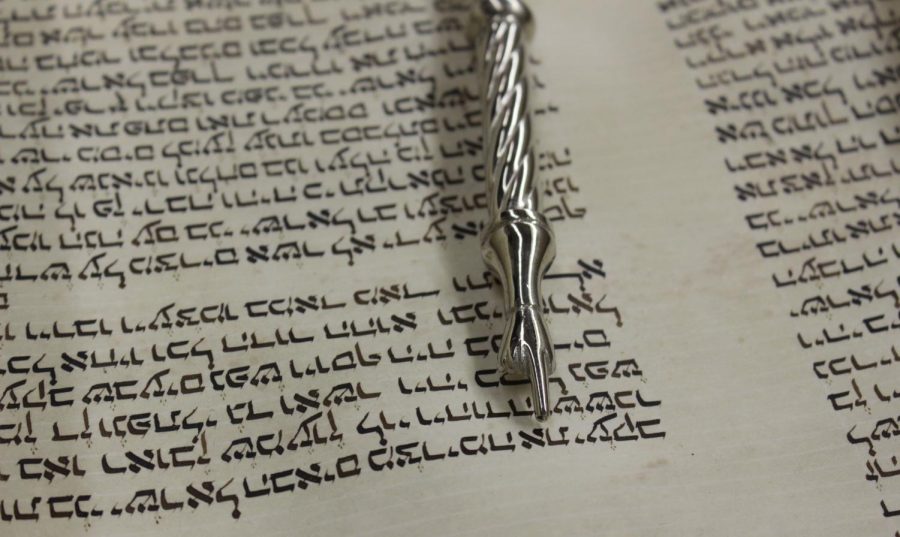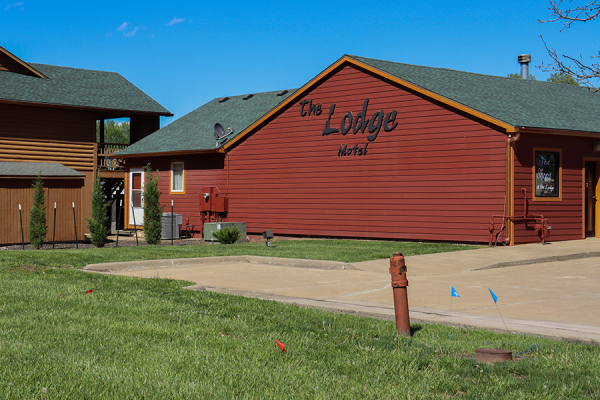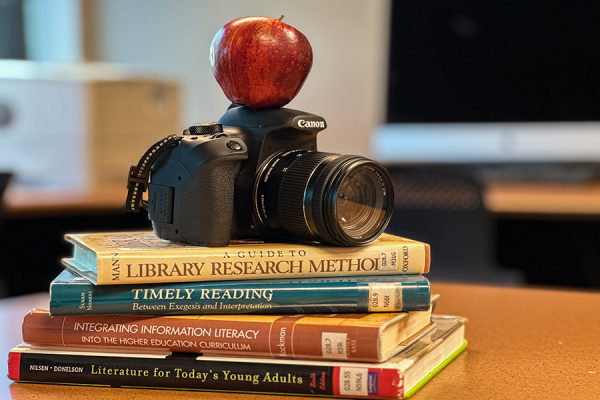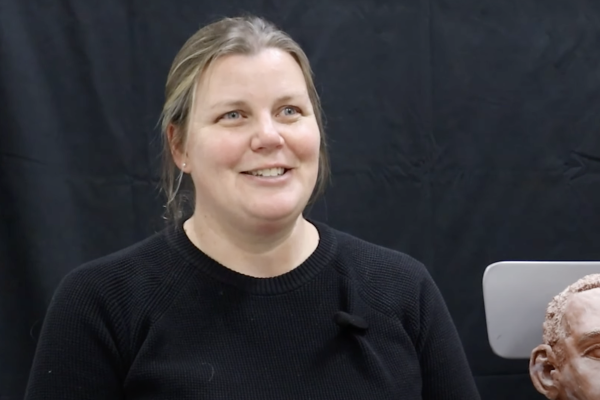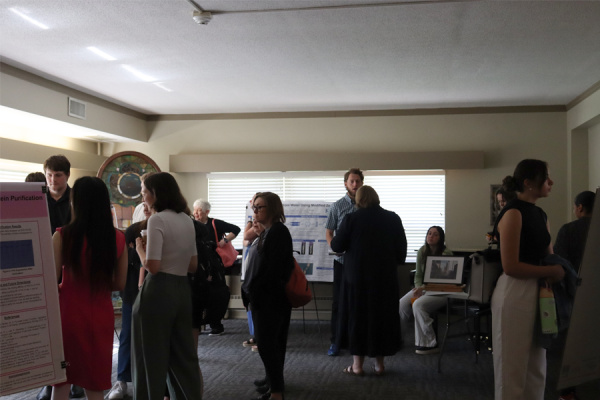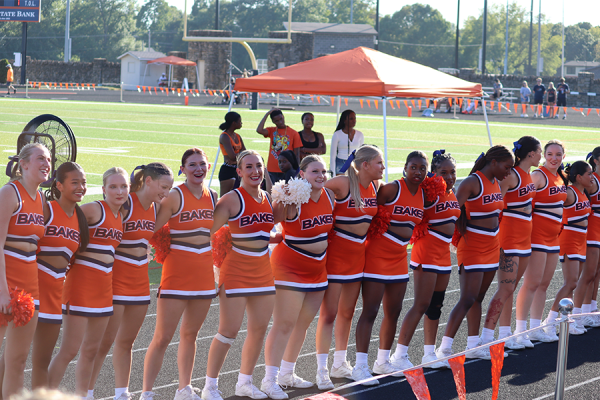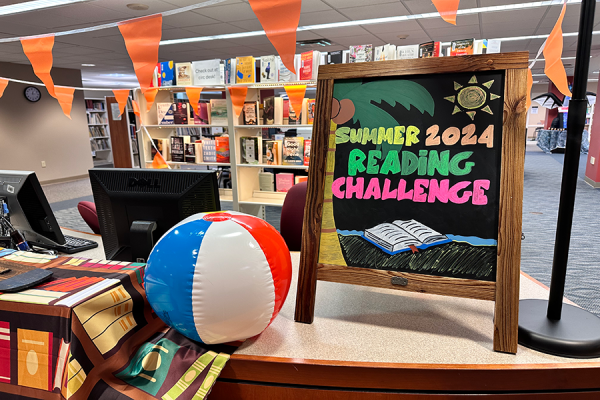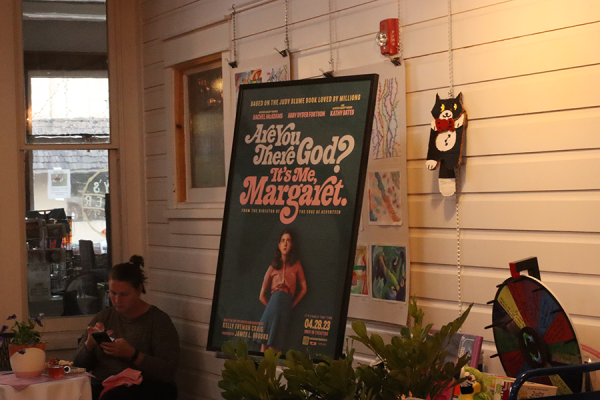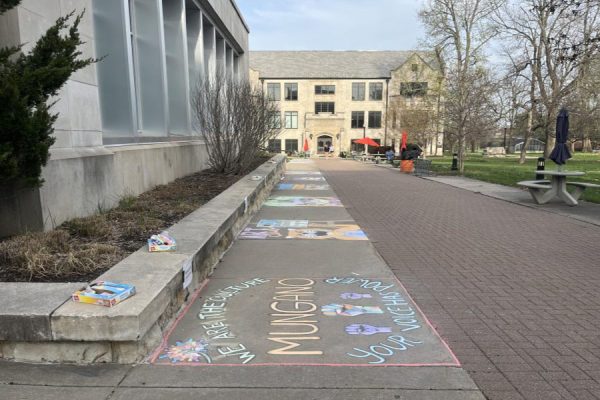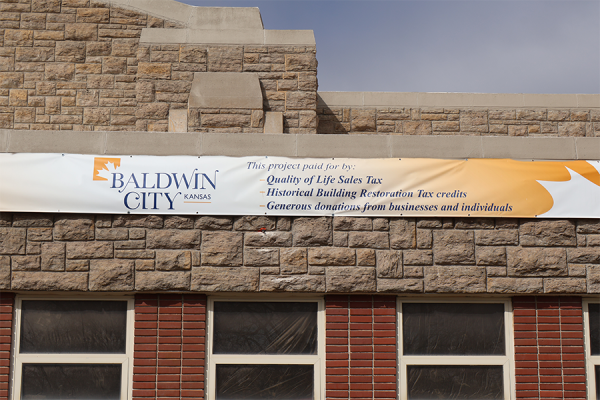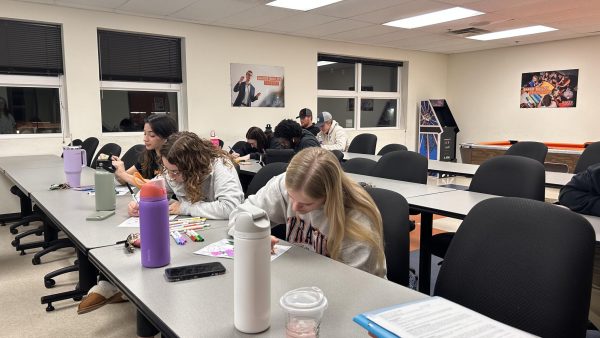Bishop Quayle Bible Collection: A history
Shown is the “Magnalia Christi Americana” which was written by Cotton Mather in 1701. This book was made by Mather to warn against witchcraft, as it was written during the Salem Witch Trials.
The Quayle Bible Collection is a collection of Bibles and religious manuscripts that were donated to Baker University by Bishop Quayle in his will in 1925. Kim Quayle, Baker University alumna and great-great granddaughter of Bishop Quayle, said she remembers stories from her childhood about Bishop Quayle.
“I’ve found some letters to and from the Bishop in some of the books I have from his collection,” Quayle said. “He was kind, a sought-after speaker and a dedicated father.”
Quayle explained that he donated part of his collection to represent the connection he has with the university.
“[Bishop Quayle] graduated from Baker and his father in law was Werter Davis, the first president, so he had some pretty strong ties to Baker,” Quayle said.
The familial connection the Quayle family has with Baker is very important to the family.
“I love the fact that my grandchildren and great grandchildren will be able to see Baker and the collection and make that connection,” said Quayle.
Victoria Jones, senior, was impressed with the Quayle Bible Collection the moment she first laid eyes on it.
“The collection had more than meets the eye, and I could have spent hours there looking at each display,” said Quayle.
The collection gives students the opportunity to learn from and enjoy old religious texts, but it also gives students the chance to see pieces of history in real life.
“I think that the Quayle Bible Collection adds to the religious experience at Baker, separating it from other universities,” Jones said. “It’s a place that history and religion meet and can be explored.”
The Quayle Bible Collection also features different exhibits throughout the year. Jones said she thinks the exhibits are some of the most fascinating parts of the Collection, and she’s looking forward to visiting the newest exhibit: From Creation to Apocalypse: The Bible in America from the Pilgrims to the Civil War.
Nicholaus Pumphrey, curator of the Quayle Bible Collection since 2016, said it has always been a goal of his as a professor and curator to have his students help design exhibits.
“The idea behind this exhibit, is that everybody debates about whether or not America was founded on Christian values or not and who were the groups that sought religious freedom… and this exhibit analyzes texts from the times of the Pilgrims to the times of the Civil War,” Pumphrey said.
He said this exhibit shows how the Bible is viewed in different ways and how the Civil War brought upon the creation of new religions like Jehovah’s Witness and Seventh-Day Adventist.
Pumphrey said there have been many additions to the collection since the original donation by Bishop Quayle.
“The original donation was around 400, and we have almost doubled that over the years,” he said.
Books are added through donations, auctions, and some are specifically purchased by the department.
“We get a lot of donations… some are family bibles, and some are done in someone’s name,” he said. “People have these sacred books, and they don’t want to throw them away but they aren’t sure what to do with them… We are able to take them and put them on display and allow people to continue to use and enjoy them.”
Pumphrey said the Quayle Bible Collection brings a lot of significance to Baker University.
“This is a piece of cultural history that students can learn from and that brings in visitors from all over,” Pumphrey said. “It also gives the university some reputation from scholars… scholars are able to contact me and request photos and use of the texts.”
The Quayle Bible Collection is located on the top floor of the Library and is open on Saturdays and Sundays from 1 to 4 p.m. Pumphrey said he hopes people will continue to come visit and enjoy the exhibits. He said the collection is extremely valuable and more complete than collections found at larger universities.
“Any major university in the world has a manuscript collection… and when professors come visit they are just blown away by what we have” Pumphrey said.
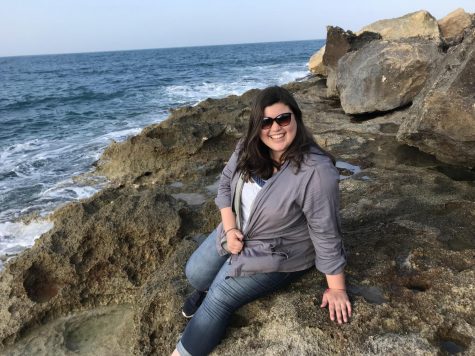
Megan is a senior Public Relations And Spanish double-major from Paola, KS. She is involved in Alpha Chi Omega and the Baker Band. Megan enjoys writing...


